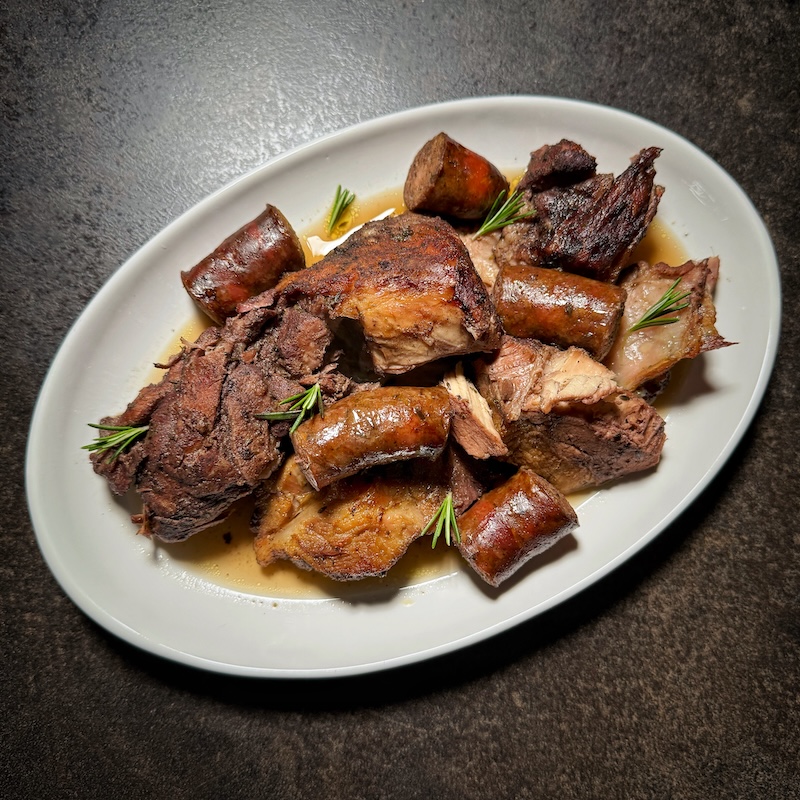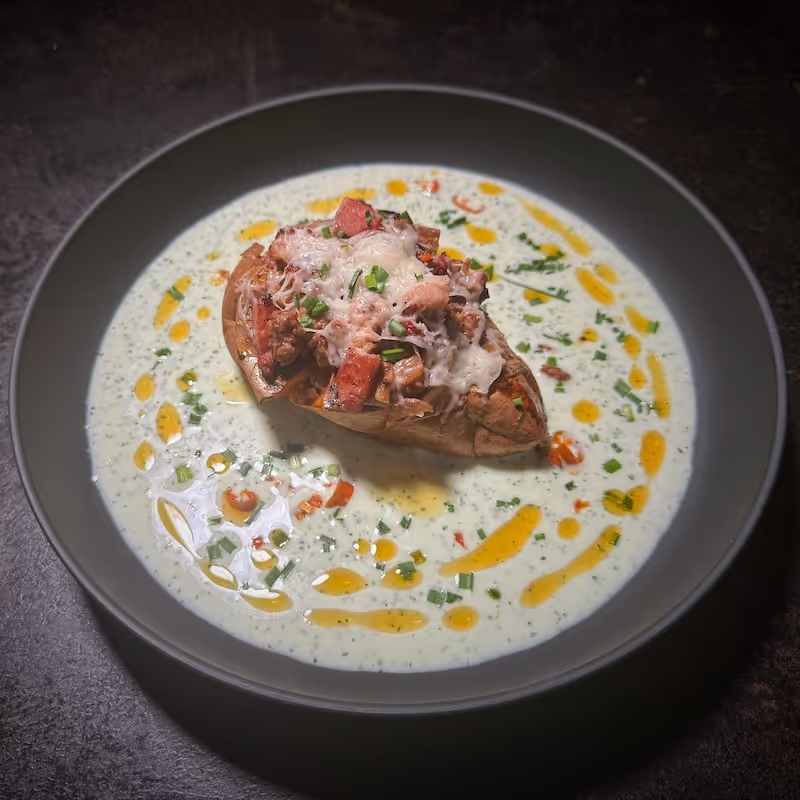Mediterranean Kofta Bowl
A flavorful recipe featuring spiced beef kofta meatballs, parsley pesto, and a fresh salad, blending vibrant Mediterranean and Middle Eastern flavors.
Servings
Prep Time
Cook Time
Ingredients
Total Time
Ingredients
Kofta:
- 400g beef (preferably fatty)
- 1 tsp 7 peppers powder (optional)
- 1 tsp cumin powder
- 1 tsp smoked paprika (sweet and spicy)
- 1 cup fresh parsley
- 4 spring onions
- 1-2 garlic cloves
- 1 tbsp Greek yogurt
- Salt to taste
Parsley Pesto:
- 40g parsley
- 1-2 garlic cloves
- 10g mint
- 10g pine nuts
- 10g Parmesan cheese
- 50ml olive oil
- Salt to taste
Salad:
- 100g cherry tomatoes, diced
- 1-2 cucumber, diced
- 1 small onion, finely sliced
- 1 tbsp olive oil
- Salt to taste
- 1 tsp sumac (or black lemon powder, or lemon juice)
Tahini Sauce:
- 1 tbsp tahini
- Water
- Harissa to taste
Serve:
- Greek yogurt
- Pine nuts, lightly toasted
Equipment
- Meat grinder or food processor
- Blender (immersion or high-powered)
- Grill pan or cast iron skillet
Instructions
Today, I want to share a summer dish that combines a multitude of flavors I discovered through the years. Yes, they are from different cultures, but somehow, they blend perfectly together and summarize the best of how we cook around this household. So, without further ado, let's start.
Instructions:
Prepare the Kofta:
- Grind the beef with parsley, spring onions, and garlic in a meat grinder.
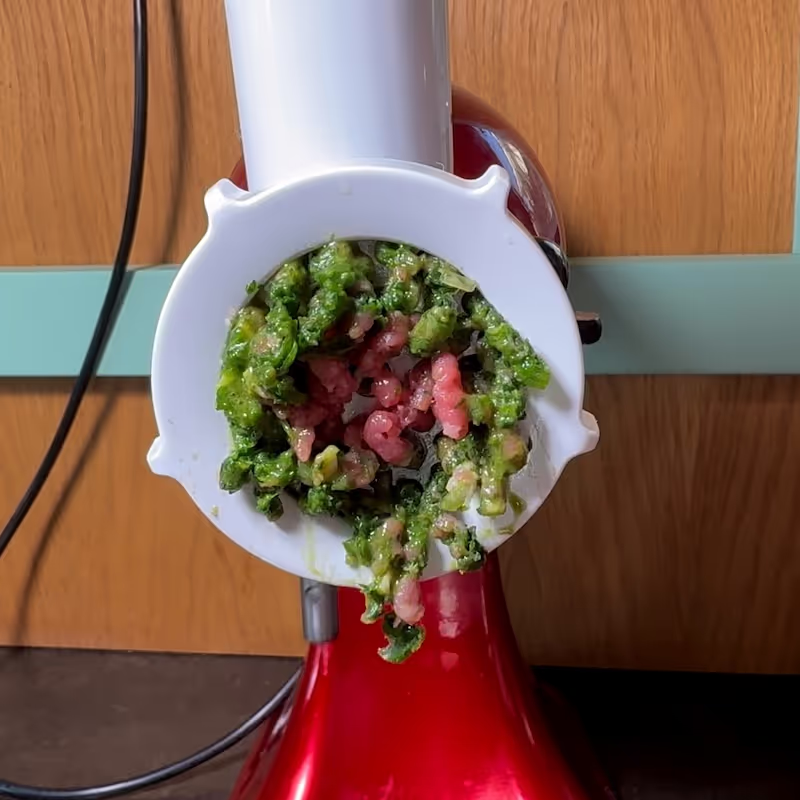
- If you don't have a grinder, you can use pre-ground beef and blend the rest in a food processor.
- Add the spices and the yogurt to the mixture and mix well.
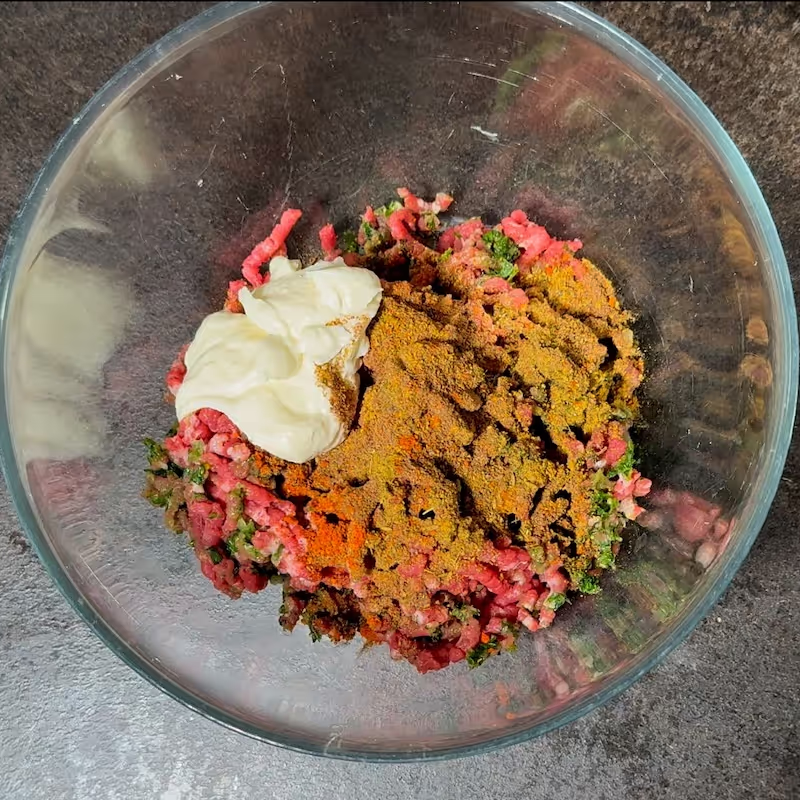
- Refrigerate while preparing the other components.
Make the Parsley Pesto:
- Using a food processor or hand blender, make a paste with parsley, garlic, mint, pine nuts, Parmesan, olive oil, and salt.
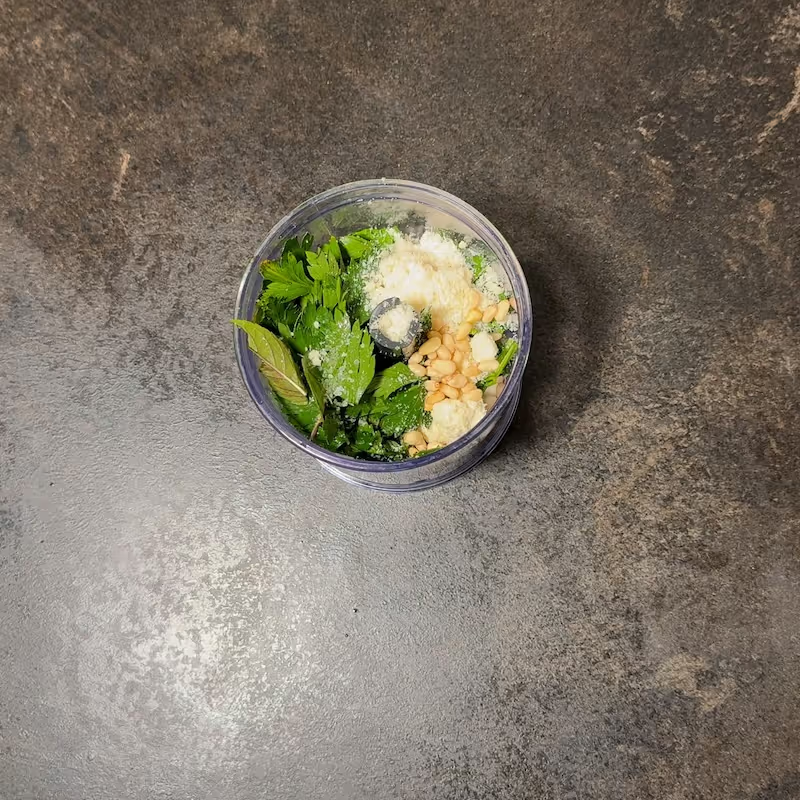
Prepare the Salad:
- Combine the tomatoes, cucumber, and onion in a bowl.
- Add olive oil, salt, and sumac (or lemon powder/lemon juice).
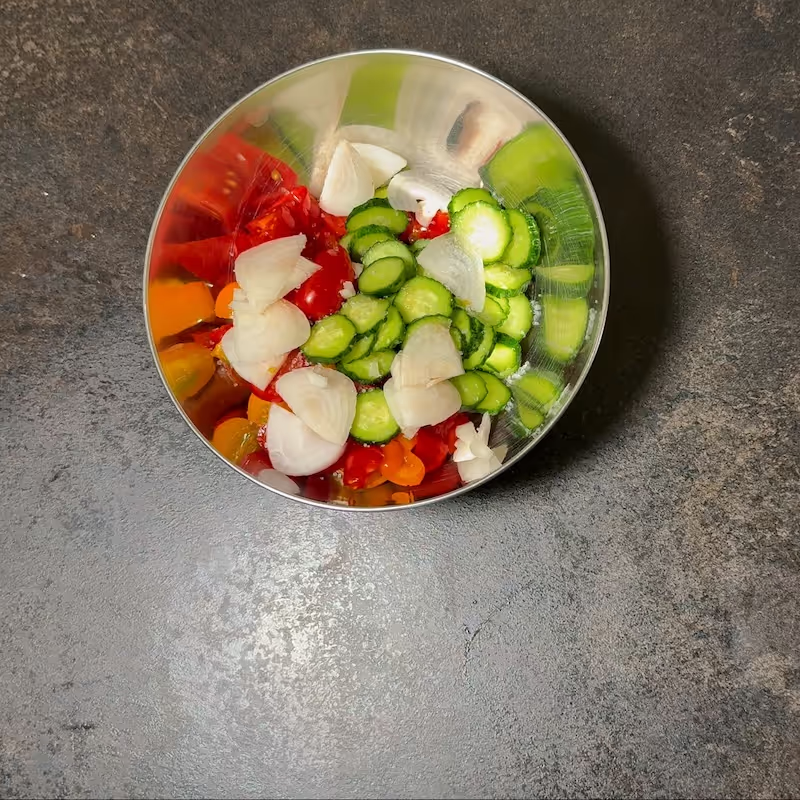
- Mix well and let it rest.
Make the Tahini Sauce:
- In a bowl, mix tahini with cold water until it becomes liquid.
- Add harissa to taste, combine, and set aside.

Cook the Kofta:
- Heat the grill pan and form the kofta into ping-pong ball-sized patties.

- Cook on a hot grill over medium heat, drizzling with olive oil, for about 2-3 minutes on each side or until done.
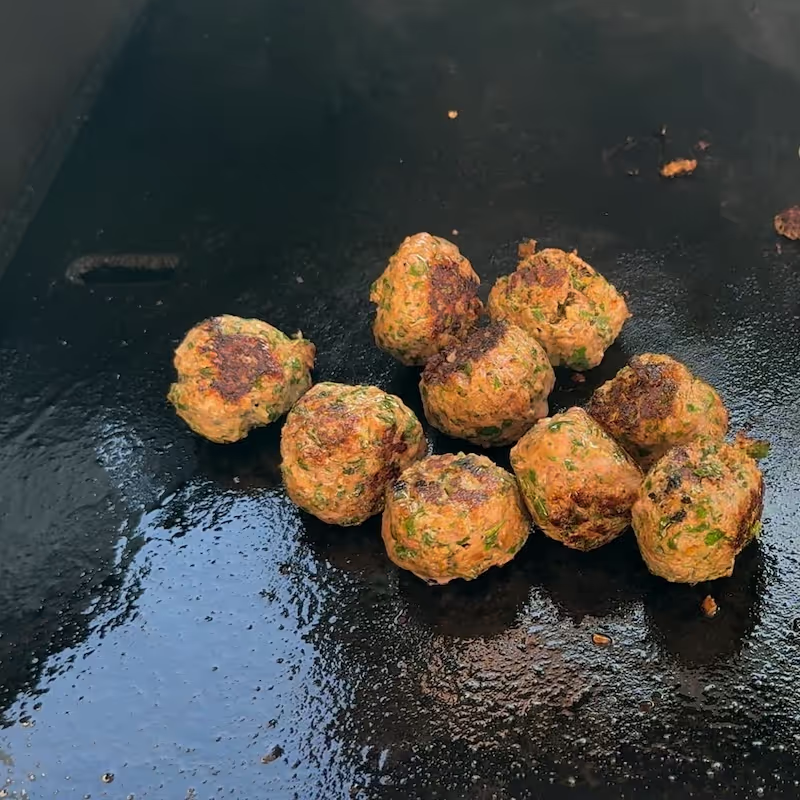
- Alternatively, cook them indoors in a cast iron skillet, covering them with a lid to keep them juicy.
Assemble the Dish:
- Place a base of parsley pesto, Greek yogurt, salad, kofta patties, and toasted pine nuts.
- Drizzle with tahini sauce and harissa, then serve.
Why This Recipe Matters to Us
Over the years, our kitchen has become a melting pot of cultures and flavors—from the bold spices of the Middle East to the bright, herbaceous notes of the Mediterranean.
And this kofta bowl brings together some of our favorite discoveries. As you can imagine, we didn’t grow up with this exact dish, but each part of it reflects something we’ve come to love: grilled meats full of spice, fresh chopped salads, creamy sauces, and bold, contrasting textures.
At first, it started with a simple idea: making kofta at home in a way that felt both true to its roots and adapted to our own rhythm.
Truth be told, the tahini-harissa sauce was something we improvised, the parsley pesto came from a need to use up herbs, and the salad added just the right brightness to bring everything together.
Origins of Kofta and Culinary Influences
If you want to know more about the history behind this recipe then let me tell you that the word kofta comes from the Persian word kuftan, meaning “to pound” or “grind,” which refers to the traditional preparation method. Kofta recipes can be found across the Middle East, Central Asia, North Africa, and even the Balkans and South Asia. As a matter of fact, in Romania, we call meatballs chiftea, which is pronounced in a very similar way.
However, in its oldest versions, kofta was likely made with lamb or mutton and seasoned with a variety of warming spices.
Our version pays homage to this deep-rooted tradition while weaving in a few changes.
Instead of lamb, we use beef—leaner but still flavorful. We grind in fresh herbs like parsley and spring onion, a nod to Mediterranean freshness. The pesto may not be traditional, but the flavor pairing with the kofta is surprising and addictive.
The tahini-harissa sauce introduces just enough heat to balance the cooling yogurt and zesty salad.
In the end, this bowl is as much a personal story as it is a recipe—rooted in culinary traditions, filtered through how we cook today.
Adapting the Recipe to Your Kitchen
If you don’t have a grill or want to keep things simple, this recipe works perfectly in a cast-iron skillet. Just make sure to cover the pan with a lid after flipping the kofta patties. This traps steam and keeps the meat juicy, similar to how it would behave on a covered grill.
You can also bake the patties in the oven at 200°C (400°F) for about 15–20 minutes, which makes batch cooking easier.
The salad, sauces, and pesto can all be made in advance, making this a fantastic option for entertaining or prepping ahead for weeknight dinners.
Nutritional Benefits and Balance
This dish strikes a nice nutritional balance:
- Protein: The beef kofta provides high-quality protein along with iron and B vitamins. If you use lamb, you get a higher fat content, which may add more richness.
- Healthy Fats: The tahini and olive oil bring in heart-healthy fats, while the walnuts in the pesto provide omega-3s.
- Vitamins and Antioxidants: The fresh herbs, cucumber, tomatoes, and onion in the salad deliver fiber, vitamin C, and antioxidants.
- Digestibility: Yogurt, lemon juice, and herbs help brighten and lighten the dish, making it easier to digest, even on warm summer days.
You can also make small adjustments—swap in Greek-style plant-based yogurt for a dairy-free version, or use turkey for a leaner option.
FAQ:
Let's answer some questions that might arise:
Q: What are kofta meatballs?
A: Kofta meatballs are a type of spiced meatball, often made from ground beef, lamb, or a combination, mixed with various herbs and spices.
Q: Where did kofta originate from?
A: Kofta originated from the Middle East, particularly Persia, and has variations across the Middle East, South Asia, and North Africa.
Q: Can you cook kofta in the oven?
A: Yes, you can bake kofta in the oven. Preheat the oven to 400°F (200°C), place the kofta on a baking tray, and bake for about 15-20 minutes until fully cooked.
Final Thoughts
I hope you’ll give this Mediterranean Kofta Bowl a try and let its layers of flavor speak for themselves. This dish is more than a recipe—it’s a reflection of how we cook, improvise, and bring together what we love from different corners of the world.
If you do make it, don’t forget to tag us—we’d love to see how you bring it to life in your own kitchen.
And yes, the full video tutorial is available on our YouTube channel, so check it out, and if you enjoy it, don’t forget to like, comment, and subscribe to support our cooking adventures.
Nutrition Facts / Serving
- Calories 623
- Total Fat 47 g
- Cholesterol 68 mg
- Sodium 617 mg
- Potassium 725 mg
- Total Carbohydrate 20 g
- Sugars 8 g
- Protein 33 g


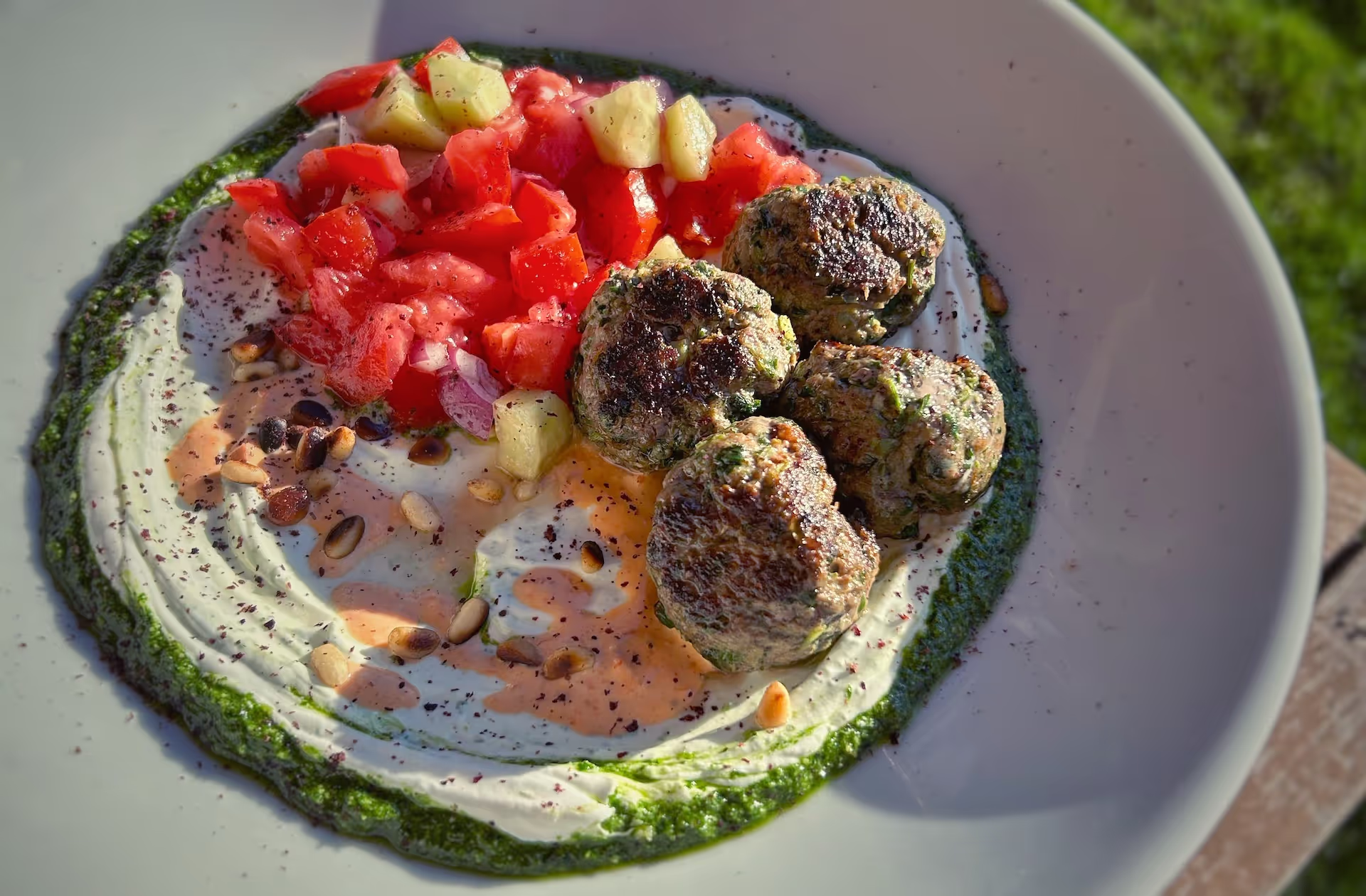

.svg)



